- Interviews
- Jane Jensen (Englisch)
Interviews
Jane Jensen (Englisch)
Gesprächspartner: Ingmar Böke
Sprache: 
Vom:
03.10.2011
Adventure-Treff: Dear Jane, thanks a lot for doing another interview with me. In the beginning I’d like you to tell us how you ended up at Sierra back in the days and how you remember your initial days at the company.
Jane Jensen I was working as an engineer at Hewlett-Packard and dreaming of being a novelist. I had a novel I had been working on for awhile but it wasn't really gelling. I bought my first PC in 1988 and bought 2 games with it -- King's Quest IV and Manhunter: San Francisco. I was completely hooked and bought everything else from Sierra that I could find. I loved adventure games and so I applied to work for them. I was brought onboard a year later as a staff writer, to write game doco and some dialogue and things like that. It was a great company then, a small company in the mountains near Yosemite and it was a very creative place to be.
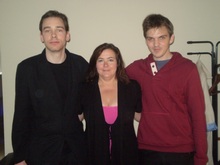
A-T: Describe how you worked your way up in the next years at Sierra until reaching the point where you got permission to do something on your own.
Jane: I was hired only as a staff writer and NOT as a designer, but the creative director at the time, Bill Davis, had a game idea he wanted implemented so myself and another writer, Gano Haine, were given the job to design it. That was a challenge, because we had to just stick close to Bill's vision. After that I had the chance to work on King's Quest VI with Roberta Williams. And after that project I was allowed to pitch my own series, which become GK.
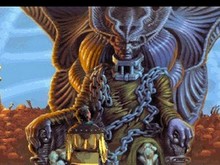
A-T: During that time period a game was created that many consider to be one of the best adventure games until this day: King’s Quest 6. Please tell us what your job on the game was and share some memories and anecdotes from the creation of the game.
Jane Roberta typically worked with another writer on her games, working with them to map out the initial concept and then letting the other person do the day-to-day, in the office work. She would playtest as the game came together and definitely knew what she wanted. In the beginning, we sat in her home for about 2 weeks just mapping out ideas on a big sheet of paper. She was open to ideas, but had a strong sense of what King's Quest was and wasn't. That was a fantastic learning experience for a new designer, not only to see her process but also to see how strong her convictions were and how she expressed them. It gave me more confidence in my own design vision. For example, she would play a build for 3-4 days and turn in a 10 page list of changes, down to the most minute pixel-level detail. And that level of quality made her games feel very polished.
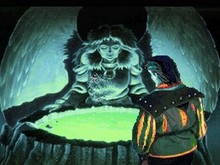
A-T: Not long after King’s Quest 6 you finally were awarded the chance to start your own franchise. How was the general idea for the Gabriel Knight series and the main characters born? What inspired you when you originally came up with Gabriel, Grace and the Schattenjaegers?
Jane: I wanted to do a mystery series, because I felt it would more naturally mesh with puzzles, talking to other characters and the exploration you do in an adventure game. And I wanted to involve the paranormal just because I liked it. I was a fan of graphic novels like Sandman and Hellblazer at the time, so those were inspirations. I toyed with the main character being a professor of parapsychology and other ideas, but the idea that he was a modern day inquisitor or witch-hunter seemed edgier and more unique. It's really hard to pin down how some of the details came to be except that they evolved as I was working on the plot for the first game.

A-T: Please share your memories and some anecdotes of the creation of Gabriel Knight: Sins of the Fathers.
Jane At the time, the character animations were done by filming a real person in costume at Sierra's blue screen studio, then the animators would paint over that. Of course, these were little characters just walking around or doing small animations, like Gabriel running a hand through his hair. But these parts were played by people who worked there, often artists or programmers. One of the programmers on the team, Robert Lindsely, was used as the Mosely figure and that's were a lot of Mosely's personality came from -- Robert was just like that!

A-T: During a time when FMV games like Under a Killing Moon made their big splash into the gaming world it was announced that the sequel to Gabriel Knight would be done in FMV as well. How were your thoughts about it at the time and how exciting was it to tbe one of the first to fully explore this new medium?
Jane I was excited to do GK2 in video. It was a whole new challenge, and a lot of fun to do the casting and then see real actors play the roles and deliver your dialogue. I loved it! And it felt more like a big team "production". Of course, the GK2 script was hugely ambitious for such a project. Like a 700 page script, plus horses, wolves, snow scenes, an opera! It really was crazy. But fortunately, we had a great director, Will Binder, and producer, Sabine Duvall, and our art leads Nathan and Darlou Gams, all the actors -- everyone loved the project and was willing to do whatever it took to get it made. There was a lot of passion put into that game. You could say that we were too naive to know that we couldn't do it, so we did it anyway.
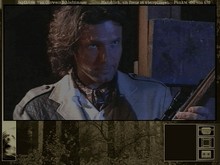
A-T: Please share your memories and some anecdotes of the creation of Gabriel Knight: The Beast Within.
Jane: The production team was shooting about 20 pages of script each day. This was shot on blue screen and so the backgrounds would be created by the artists. We used photos that had been painted over as the backgrounds. Often the artists would be delivering a dozen or more backgrounds to the studio just in time for filming that day's shoot. And props, too, and costumes, were all coming together at the last minute. Some of the props the art team made, like the talisman, carved out of wood and painted with gold. Keep in mind that this is not Hollywood, but just a small game team in the mountains near Yosemite.

Maybe one of my favourite sections was the opera. I wrote the lyrics and story and my husband, Robert Holmes, write the music. We were going to film it in Seattle in an old theatre. So we found an opera singer coach who knew many of the operatic singers in town, and did a casting session. I remember sitting in a little room as these singers came in to audition and the sound just filled the room up and sent chills up your spine. So we cast it, and recorded the vocals in a local sound studio. Then one day we had all the same singers in costume in the theatre to act out the opera and film it to the sound track we'd recorded. That day I remember sitting in the audience watching this being filmed and thinking that man, I had the best job in the world! That you could invent a small part of an opera and get to work with real opera singers on a real stage and watch it being acted out. Very cool!

A-T: When you finished The Beast Within and started working on a new game, the situation at Sierra had already changed a lot. Please give us an idea what exactly had changed and how it differed to work for Sierra these days.
Jane: Sierra had been sold to another company, Vivendi (at least I think they were the first). There was a lot of change in the industry at that time, action games had come in strong and were taking over sales. No one was really sure what Sierra was going to do, or wanted to do. So GK3 was really the last big adventure game we made. And it was made because GK1 and GK2 had done quite well. But there wasn't a real conviction in the company about making those kinds of games anymore. It wasn't the same.
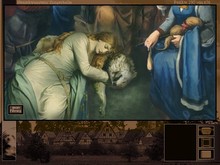
A-T: Talk about the decision to turn Gabriel Knight III into a 3D game instead of following the path of the predecessor. What were your thoughts about it at the time and how do you feel about the 3D technology in the game in retropect?
Jane: I was sorry to see FMV go, because GK2 had been so much fun to do. But that's just the way it was. As a designer, you don't want to put out a game with technology everyone considers "old" and "out dated" because then you limit the potential success of the product. So I was willing to work with the 3D and it did provide some cool new design options, like being able to move the camera and use that in the design of the puzzles.
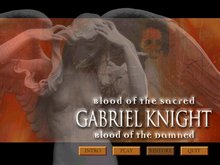
A-T: The production of Gabriel Knight III was troubled in many ways. Please talk about that and share your memories and some anecdotes from the creation of the game.
Jane: It took a long time, if that is what you mean. We had bought a 3D game engine, but maybe halfway through the project, our tech lead decided it wasn't good enough and wrote a whole new engine. There were other issues with the 3D animation and just getting staffing. So it was long. 3D was much more time consuming than I think anyone was prepared for.
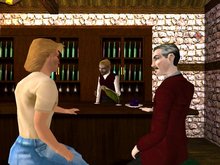
But it was still a good production. I enjoyed the fact that we used Tim Curry again for Gabriel's voice. It was fun recording the voice-over. And I loved the GK3 story, the Rennes-le-Chateau story. I felt very passionate about the game, but it did feel like I was more pulling the company and team behind me vs GK2, where everyone was super fired up.

A-T: What situation did you find yourself in after the game was finished. It would be very interesting to find out more about your “last days” at Sierra.
Jane: I went out with a whimper not a bang. GK3 shipped and that was just it really. I was on contract so they just didn't ask me to sign up for another game. And I really didn't want to. At that point I was working on a novel, Dante's Equation, and I wanted to just sit for a few months and focus on that. So that was it. It just ended.
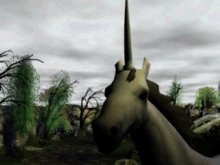
A-T: Thanks a lot for taking the time for us, Jane – much appreciated. All of the best with all of your current and future projects. Hope to welcome you back to another interview in the future.
Jane Jensen I was working as an engineer at Hewlett-Packard and dreaming of being a novelist. I had a novel I had been working on for awhile but it wasn't really gelling. I bought my first PC in 1988 and bought 2 games with it -- King's Quest IV and Manhunter: San Francisco. I was completely hooked and bought everything else from Sierra that I could find. I loved adventure games and so I applied to work for them. I was brought onboard a year later as a staff writer, to write game doco and some dialogue and things like that. It was a great company then, a small company in the mountains near Yosemite and it was a very creative place to be.

A-T: Describe how you worked your way up in the next years at Sierra until reaching the point where you got permission to do something on your own.
Jane: I was hired only as a staff writer and NOT as a designer, but the creative director at the time, Bill Davis, had a game idea he wanted implemented so myself and another writer, Gano Haine, were given the job to design it. That was a challenge, because we had to just stick close to Bill's vision. After that I had the chance to work on King's Quest VI with Roberta Williams. And after that project I was allowed to pitch my own series, which become GK.

A-T: During that time period a game was created that many consider to be one of the best adventure games until this day: King’s Quest 6. Please tell us what your job on the game was and share some memories and anecdotes from the creation of the game.
Jane Roberta typically worked with another writer on her games, working with them to map out the initial concept and then letting the other person do the day-to-day, in the office work. She would playtest as the game came together and definitely knew what she wanted. In the beginning, we sat in her home for about 2 weeks just mapping out ideas on a big sheet of paper. She was open to ideas, but had a strong sense of what King's Quest was and wasn't. That was a fantastic learning experience for a new designer, not only to see her process but also to see how strong her convictions were and how she expressed them. It gave me more confidence in my own design vision. For example, she would play a build for 3-4 days and turn in a 10 page list of changes, down to the most minute pixel-level detail. And that level of quality made her games feel very polished.

A-T: Not long after King’s Quest 6 you finally were awarded the chance to start your own franchise. How was the general idea for the Gabriel Knight series and the main characters born? What inspired you when you originally came up with Gabriel, Grace and the Schattenjaegers?
Jane: I wanted to do a mystery series, because I felt it would more naturally mesh with puzzles, talking to other characters and the exploration you do in an adventure game. And I wanted to involve the paranormal just because I liked it. I was a fan of graphic novels like Sandman and Hellblazer at the time, so those were inspirations. I toyed with the main character being a professor of parapsychology and other ideas, but the idea that he was a modern day inquisitor or witch-hunter seemed edgier and more unique. It's really hard to pin down how some of the details came to be except that they evolved as I was working on the plot for the first game.

A-T: Please share your memories and some anecdotes of the creation of Gabriel Knight: Sins of the Fathers.
Jane At the time, the character animations were done by filming a real person in costume at Sierra's blue screen studio, then the animators would paint over that. Of course, these were little characters just walking around or doing small animations, like Gabriel running a hand through his hair. But these parts were played by people who worked there, often artists or programmers. One of the programmers on the team, Robert Lindsely, was used as the Mosely figure and that's were a lot of Mosely's personality came from -- Robert was just like that!

A-T: During a time when FMV games like Under a Killing Moon made their big splash into the gaming world it was announced that the sequel to Gabriel Knight would be done in FMV as well. How were your thoughts about it at the time and how exciting was it to tbe one of the first to fully explore this new medium?
Jane I was excited to do GK2 in video. It was a whole new challenge, and a lot of fun to do the casting and then see real actors play the roles and deliver your dialogue. I loved it! And it felt more like a big team "production". Of course, the GK2 script was hugely ambitious for such a project. Like a 700 page script, plus horses, wolves, snow scenes, an opera! It really was crazy. But fortunately, we had a great director, Will Binder, and producer, Sabine Duvall, and our art leads Nathan and Darlou Gams, all the actors -- everyone loved the project and was willing to do whatever it took to get it made. There was a lot of passion put into that game. You could say that we were too naive to know that we couldn't do it, so we did it anyway.

A-T: Please share your memories and some anecdotes of the creation of Gabriel Knight: The Beast Within.
Jane: The production team was shooting about 20 pages of script each day. This was shot on blue screen and so the backgrounds would be created by the artists. We used photos that had been painted over as the backgrounds. Often the artists would be delivering a dozen or more backgrounds to the studio just in time for filming that day's shoot. And props, too, and costumes, were all coming together at the last minute. Some of the props the art team made, like the talisman, carved out of wood and painted with gold. Keep in mind that this is not Hollywood, but just a small game team in the mountains near Yosemite.

Maybe one of my favourite sections was the opera. I wrote the lyrics and story and my husband, Robert Holmes, write the music. We were going to film it in Seattle in an old theatre. So we found an opera singer coach who knew many of the operatic singers in town, and did a casting session. I remember sitting in a little room as these singers came in to audition and the sound just filled the room up and sent chills up your spine. So we cast it, and recorded the vocals in a local sound studio. Then one day we had all the same singers in costume in the theatre to act out the opera and film it to the sound track we'd recorded. That day I remember sitting in the audience watching this being filmed and thinking that man, I had the best job in the world! That you could invent a small part of an opera and get to work with real opera singers on a real stage and watch it being acted out. Very cool!

A-T: When you finished The Beast Within and started working on a new game, the situation at Sierra had already changed a lot. Please give us an idea what exactly had changed and how it differed to work for Sierra these days.
Jane: Sierra had been sold to another company, Vivendi (at least I think they were the first). There was a lot of change in the industry at that time, action games had come in strong and were taking over sales. No one was really sure what Sierra was going to do, or wanted to do. So GK3 was really the last big adventure game we made. And it was made because GK1 and GK2 had done quite well. But there wasn't a real conviction in the company about making those kinds of games anymore. It wasn't the same.

A-T: Talk about the decision to turn Gabriel Knight III into a 3D game instead of following the path of the predecessor. What were your thoughts about it at the time and how do you feel about the 3D technology in the game in retropect?
Jane: I was sorry to see FMV go, because GK2 had been so much fun to do. But that's just the way it was. As a designer, you don't want to put out a game with technology everyone considers "old" and "out dated" because then you limit the potential success of the product. So I was willing to work with the 3D and it did provide some cool new design options, like being able to move the camera and use that in the design of the puzzles.

A-T: The production of Gabriel Knight III was troubled in many ways. Please talk about that and share your memories and some anecdotes from the creation of the game.
Jane: It took a long time, if that is what you mean. We had bought a 3D game engine, but maybe halfway through the project, our tech lead decided it wasn't good enough and wrote a whole new engine. There were other issues with the 3D animation and just getting staffing. So it was long. 3D was much more time consuming than I think anyone was prepared for.

But it was still a good production. I enjoyed the fact that we used Tim Curry again for Gabriel's voice. It was fun recording the voice-over. And I loved the GK3 story, the Rennes-le-Chateau story. I felt very passionate about the game, but it did feel like I was more pulling the company and team behind me vs GK2, where everyone was super fired up.

A-T: What situation did you find yourself in after the game was finished. It would be very interesting to find out more about your “last days” at Sierra.
Jane: I went out with a whimper not a bang. GK3 shipped and that was just it really. I was on contract so they just didn't ask me to sign up for another game. And I really didn't want to. At that point I was working on a novel, Dante's Equation, and I wanted to just sit for a few months and focus on that. So that was it. It just ended.

A-T: Thanks a lot for taking the time for us, Jane – much appreciated. All of the best with all of your current and future projects. Hope to welcome you back to another interview in the future.
Aktuelle Artikel
![]()
Unterstützen
![]()
Adventure-Treff-Verein
IBAN: DE38 8306 5408 0004 7212 25
BIC: GENODEF1SLR
Bitte beachtet, dass wir leider keine steuerrechtlich anrechenbare Spendenquittungen ausstellen können.
Mit jedem Einkauf bei unseren Partnern unterstützt ihr die Arbeit des Adventure-Treff e.V.













